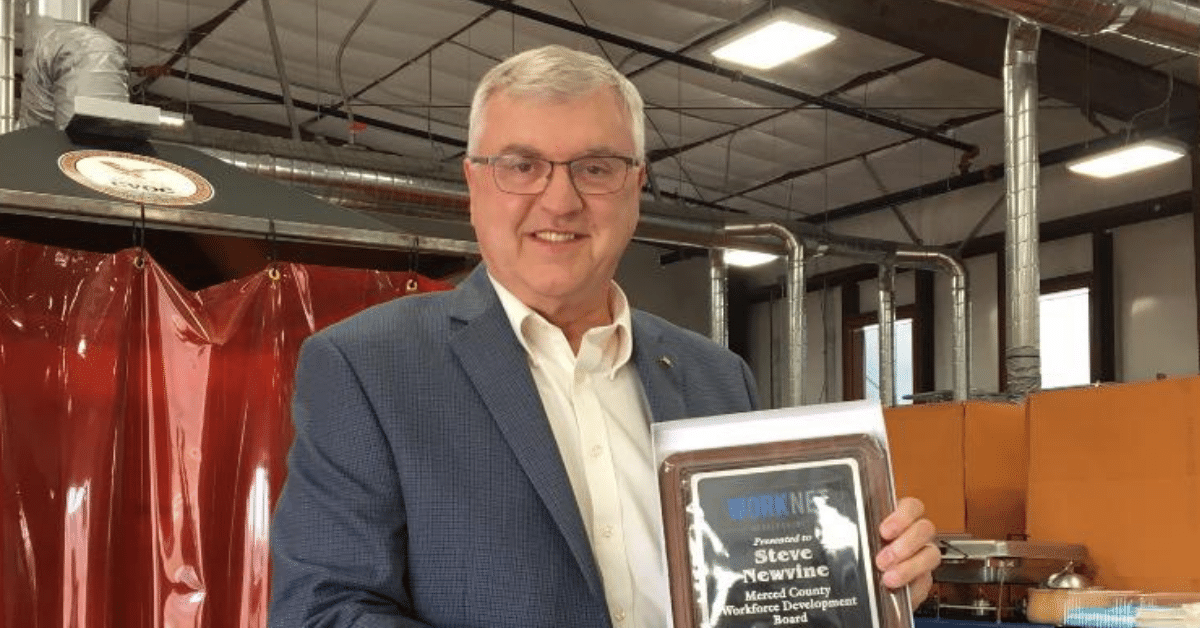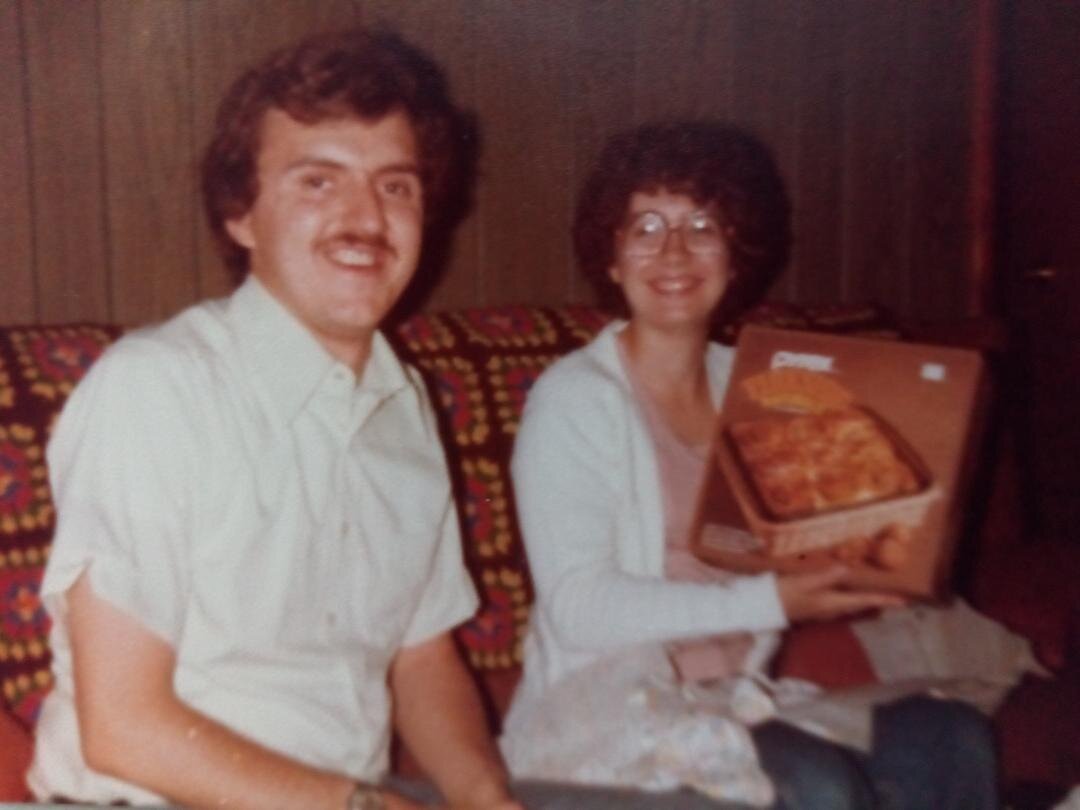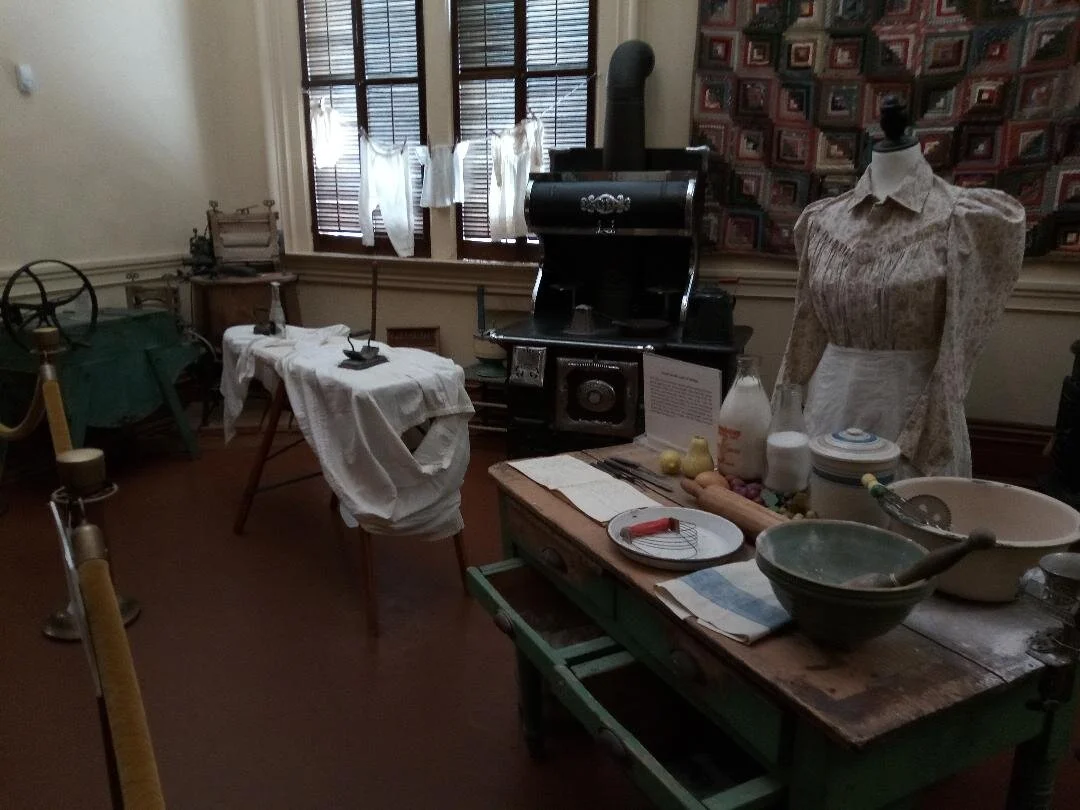
Watching the Watermelon Harvest-
Harvesters toss watermelons along a human chain until it reaches large cardboard storage bins on a flatbed truck. Photo: Steve Newvine
Another Big Year for a Favorite Crop
It’s an impressive sight. Farm workers tossing watermelons along a human chain that ends with a worker on a flatbed trailer placing the fruit into cardboard containers.
It is harvest time for one of Merced County’s great variety of crops.
The preferred harvest method in this particular field is known as cut and pitch. “Yes, it’s pretty much pitch, pitch, and dropping it on the truck,” said Tashi Zouras, President of the Western Watermelon Association.
Watermelon is ready for harvest at the Dan Avilla and Sons field in Atwater, Merced County. Photo: Steve Newvine
On the surface, this harvesting process seems labor intensive. But Tashi says the cutting and pitching crews understand the routine well and work efficiently.
“The cutter cuts the fruit loose from the vine,” he said. “The cutter is trained to tell by color whether the watermelon is ready to be taken from the field. The cutter cuts, and then places it in the row for the pitcher to pick up.”
That’s when the fun begins.
I spotted the operation of Dan Avilla and Sons field in Atwater. Like clockwork, the pitchers toss the fruit about six feet to the next person.
Eventually, the pitching ends on the flatbed trailer where cartons are sitting on pallets.
While the pitching part of the watermelon harvest seems labor intensive, not all watermelon ripens at the same pace. Photo: Steve Newvine
Because the watermelon crop does not ripen all at the same time, Tashi says the cutting and pitching really cannot be mechanized efficiently.
The work crew will return to the field later on as the rest of the crop is ready to be harvested.
“North of Merced County we have growers who use a conveyor belt system,” Tashi says, “But the pitching system used by Dan Avilla here in Merced County is efficient.”
According to the 2018 Merced County Agriculture Report, almonds are the biggest crop. Watermelons are not even listed in the top fifteen crops.
Still, the fruit carves out a sizable slice of local farm production.
“There were approximately three-hundred, seventy acres grown in Merced County in 2018,” according Merced County Deputy Agricultural Commissioner Carrie Mitchell.
“Most of the acreage was grown on the west side of Merced County.”
Deputy Commissioner Mitchell says the County performs yearly in-field standardization inspections to check for maturity, and determine whether the crop is free from defects and serious damage.
“This is to ensure that the consumer is buying the best product possible,” she said.
While there are some farms north of Merced County that use a conveyor belt system, this time honored cut and pitch process continues to work well in the watermelon fields operated by Dan Avilla and Sons. Photo: Steve Newvine
Industry wide, the Western Watermelon Association says more than five billion pounds are shipped nationwide every year.
That represents a billion dollars in revenue according to the Association.
The website SeeCalifornia.com, states that growers in the state produce approximately 330,000 tons of watermelon annually.
While most people will agree it is a fruit, in Oklahoma, the watermelon is the official state vegetable.
Back in Merced County, the watermelon crop is heading to the retail markets. The Western Watermelon Association says about ninety-percent of the watermelon grown here stays in the state.
This field in Atwater will continue to be harvested as the remainder of the fruit matures. The fields will be likely be regrown for a fall harvest.
Then once again, the cutting and pitching ritual will resume in the watermelon fields.
Steve Newvine lives in Merced. His latest book Course Corrections, is available on Lulu.com
A Special July-
A month marking a milestone anniversary
My friend Andy, who taught me the game of chess, was among the first to congratulate my fiancéeVaune. Photo: Newvine Personal Collection.
July will always hold a special place in my memory. This month, my wife and I will celebrate our fortieth wedding anniversary.
The pathway to my wedding day actually started several months prior to July.
Almost from the moment when my wife-to-be answered yes to my marriage proposal, the plans for that special day were underway. We started telling friends and family about the engagement.
Among the first people I spoke to outside of my family was my chess partner and good friend Andy.
Andy was an older man who lived with his daughter near the apartment I rented at the time.
His story about coming into my life and teaching me the game of chess was told in this space about four years ago
For several months, Andy and I played chess weekly at his daughter’s home. We enjoyed a great friendship during the time I got to know him as my career was getting started.
He would always ask me how my girlfriend was. When she became my fiancée, he was very happy for both of us.
With about one-hundred, fifty miles separating our parents from us, wedding planning was challenging in 1980. Here we are opening a gift from a family member. Photo: Newvine Personal Collection.
As Andy and others were told about our engagement, there was a growing list of things to do in preparation for the big day.
Plans started taking place in Ilion, New York where my bride-to-be had lived right up until she left for year three of her college education.
Details that needed to be worked out included scheduling the ceremony with the local Catholic church, reserving a reception venue, hiring a professional photographer, and a whole array of things that had to be done in preparation for the most important day in our lives.
Complicating matters was being about one-hundred, fifty miles away from my bride-to-be parents’ home.
By July, all of that planning was out of the way.
My niece Tina, brother Terry, and good friend Tim in a grainy photo from the rehearsal dinner the night before I was married. Photo: Newvine Personal Collection.
I can remember the month of July 1980 like it happened forty weeks ago rather than forty years.
I started the month in a new apartment that would become our first home as a married couple. We each gave up our individual apartments and rented an upstairs living space from a nice widow. I lived there for the three weeks leading up to our wedding.
My bride-to-be had moved back with her parents once the lease on her apartment had ended.
The wedding week was amazing. It was described in my 2018 book Stand By, Camera One:
There are a lot of things a married person remembers about his or her wedding day. I remember many details. There was the ceremony, the reception, and the honeymoon that come to mind immediately. But a special memory for me from that weekend was the rehearsal party held the Friday night before the wedding.
My dad used his membership in the Boonville Elks Club to secure the Ilion Elks lodge for the party. The local club catered a buffet held right after the rehearsal at the church. The Ilion lodge was in the same block as the church.
What made it stand out for me was the unifying of two families. Most of the bride’s relatives had never met the relatives from the groom’s side. The dinner, preceded by appetizers at my soon-to-be in-laws house, was a great start to what has now become a four-decade marriage.
The rehearsal party gave me a chance to greet my college buddies who made the trip. Ray was my first roommate from my first semester at Herkimer College.
At the time, he was working in his hometown of Albany. While we spoke on occasion over the previous four or five years, this was the first time I saw him in person since my sophomore year in college.
Tim is a friend I met at Syracuse. He was one of my ushers for the ceremony. Over the wedding weekend, my college friends Matt, Guf, and Rick were welcomed guests.
The rehearsal party got us all in the right mood for what was to come the next day. But for me, it really signified that two families were coming together thanks to the blessing of matrimony.
After Vaune and I said goodnight, I headed to a local motel where my family had booked some rooms for the out-of-town family members.
The motel had a small bar, so after saying goodnight to everyone, my brother Terry and my friend Tim went to the bar to have a “farewell to bachelorhood” bottle of Genesee Beer. When we finished the beer, we all headed back to our rooms to go to sleep.
That was the closest thing I had to a bachelor’s party. But I never felt as though I missed out on anything.
I was surrounded by family and good friends. I was about to get married.
It was a very happy time leading up to the most important day in my life.
All of this happened in July, forty years ago.
I’ll never forget that incredible month.
The month of July will always hold a special place in my memory.
Stand By, Camera One is now available in a hard-cover edition at
A Museum with a Sense of Humor-
My return visit to the Merced County Courthouse Museum
One of the displays at the Merced County Courthouse Museum “Beyond Appearance: Portraits of Merced County Women” exhibit shows two mannequins dressed in period costume, and wearing face masks. Photo: Steve Newvine
There’s a lot we can say about the mid-June reopening of the Merced County Courthouse Museum.
Closed for three months due to the COVID crisis, the doors swung open June seventeenth to pick up where the Merced County Historical Society left off.
By the looks of a display of two mannequins dressed in period costume, with the inclusion of modern-day face masks, it’s clear the Museum and the volunteers have a good sense of humor.
County Historian Sarah Lim was permitted to reopen the Museum as part of the public health structure for ushering business and non-profits back into operation.
The Museum was in the middle of the first exhibit of 2020, “Beyond Appearance: Portraits of Merced County Women” when it closed down due to the COVID outbreak. Photo: Steve Newvine
With most of the restrictions lifted, and new health and safety protocols in place, the Museum is getting back to business in pursuing the mission to preserve local history and educate the community on the past.
The women’s exhibit had just launched in the first quarter of 2020 and never really got a chance to be seen by many in the community. That’s all changed now.
This photograph is among dozens from the Museum archive that are on display in the exhibit “Beyond Appearance: Portraits of Merced County Women” underway until September 20. Photo: Steve Newvine.
The Museum is one of those attractions that could be taken for granted. With limited hours of operation, a reliable core of volunteers, and a presence in an iconic building, it might be easy to just pass by without thinking of the on-going work of the Historical Society.
But when access to this community asset was taken away due to the health restrictions brought on by the coronavirus, many may have lost a connection to this repository of local history.
My wife and I took in a tour shortly after reading about the reopening on MercedCountyEvents.com.
The Merced County Women exhibit is thought provoking.
With sections on agriculture, equal rights, and the role of women as consumers, there is a lot to see and read.
I spoke to the membership of the Merced County Historical Society in February. To give that talk today, I would be governed by the rules of social distancing. Photo: Sarah Lim, Merced County Historian
I was the Museum’s keynote speaker for the annual meeting held in early February.
I remember a nearly filled County Board of Supervisors meeting room followed by a potluck style reception.
It’s amazing how a few months living in the COVID era has changed things.
The courtroom exhibit, part of the permanent collection at the Merced County Courthouse Museum. Photo: Steve Newvine
The permanent exhibit continues to impress me.
On the third floor, the courtroom exhibit remains as a long-standing reminder of the importance of our judicial system. The visitor can take a seat and take in the ambience of a real courtroom.
The school exhibit harkens back to the days of one-room schoolhouses. The visitor is taken back to a time when school was in session.
The old time kitchen and housekeeping exhibit brings back memories, or at least recollections my grandparents shared with me when I was a child.
The kitchen display at the Merced County Courthouse Museum. Photo: Steve Newvine
On the main floor, there are many exhibits in the different rooms worth viewing a second time.
My favorite this time around was an old fashioned phone booth in the main hall.
There’s a Superman costume hanging up inside the booth.
Once again, here’s a museum with a sense of humor.
Steve Newvine lives in Merced.
You can reach him at SteveNewvine@sbcglobal.net.
His book Course Corrections is available on Lulu.com
The Merced County Courthouse Museum is open Wednesday through Sunday from 1 pm to 4 pm. COVID restrictions apply. (209) 723-2401, www.mercedmuseum.org






















To explore Steve Newvine's complete collection of books, simply click on the link below.
CLICK HERE
Steve is also open to delivering speeches for service club programs and other public speaking engagements.
Contact him at: SteveNewvine@sbcglobal.net